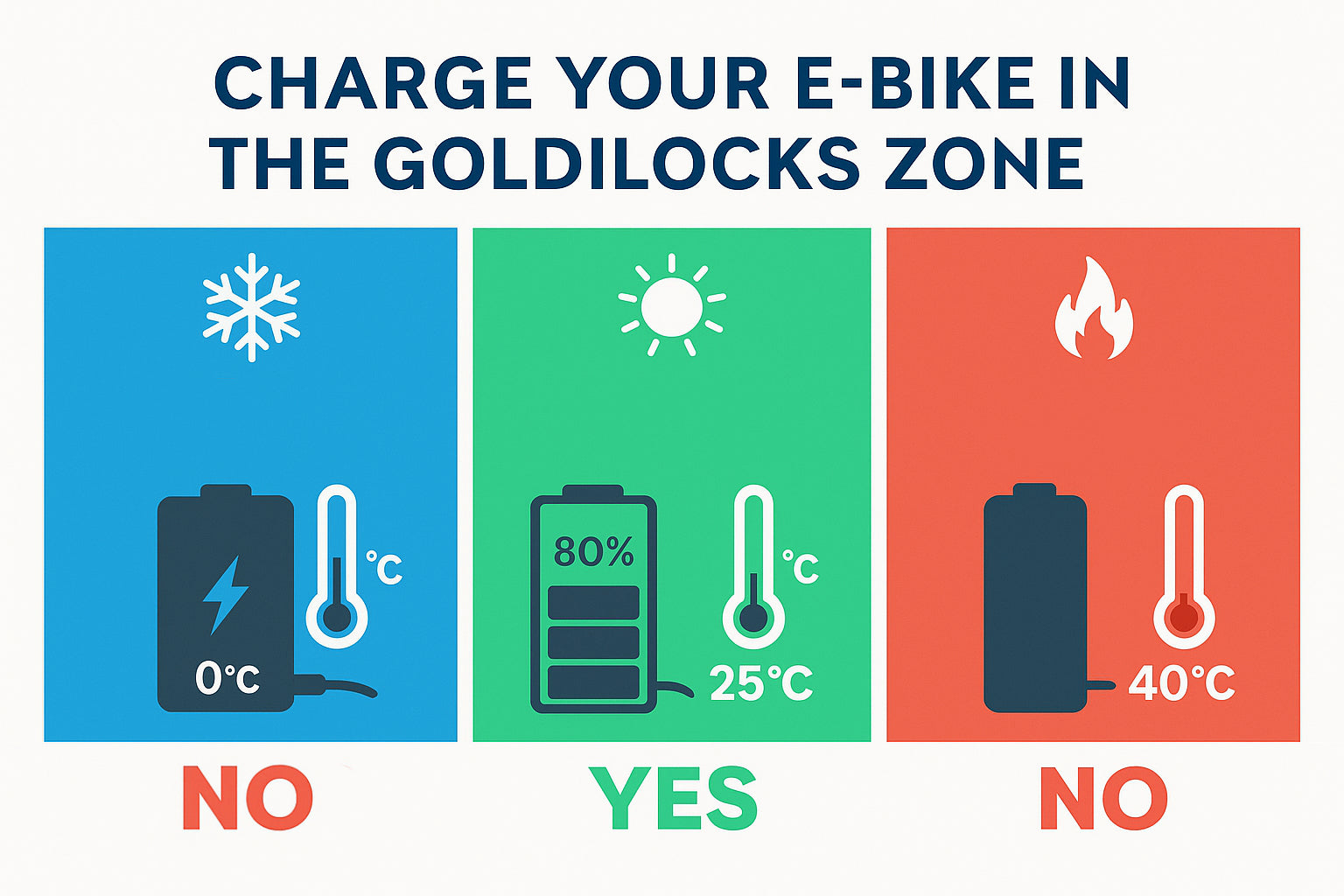Your e-bike battery is a marvel of modern technology, but it’s also a sensitive one. Just like you perform your best in a comfortable environment, your e-bike battery has its own ideal climate for charging. Overlooking this can be a costly mistake, leading to a shortened battery life, reduced performance, and even a potential safety risk.
This ideal charging environment is what we like to call the "Goldilocks Zone": not too hot, not too cold, but just right. For most e-bike batteries, this sweet spot is between 10°C and 30°C (50°F to 86°F). Understanding and following this simple rule is one of the most effective ways to protect your investment and ensure your e-bike runs like new for years to come.
When It’s Too Cold: The Invisible Damage of Freezing
You've just finished a ride on a brisk winter day. Your battery is cold to the touch. It seems natural to plug it in to charge and warm it up, right? Think again. Charging a battery when its internal temperature is at or below freezing is one of the worst things you can do to it.
- The Science: When a lithium-ion battery charges in freezing temperatures, the chemical reaction inside slows down. Instead of the lithium ions smoothly integrating into the anode (the negative side of the battery), they begin to build up on the surface, forming a layer of metallic lithium. This process is called "lithium plating."
- The Consequences: This plating is a permanent, irreversible form of damage. It reduces the battery’s capacity, increases its internal resistance, and can lead to a greater risk of internal short circuits. In short, charging a frozen battery destroys its cells from the inside out, leading to a noticeable loss of range and a shorter overall lifespan.
The takeaway: Never charge your battery when it's cold. Bring it indoors and let it warm up to room temperature for at least an hour before plugging it in.
When It’s Too Hot: The Accelerated Aging of a Battery
Just as cold can damage a battery, so can excessive heat. You’ve just completed a long, strenuous ride on a hot summer day, and your battery is warm from working hard. Plugging it into the charger right away can be just as harmful as charging it in the cold.
- The Science: High temperatures during charging accelerate unwanted chemical reactions within the battery. This leads to a faster breakdown of the cell components, which is the primary cause of battery degradation.
- The Consequences: Charging in high heat prematurely ages your battery, causing it to lose its capacity at a much faster rate. It can also lead to swelling of the battery case and an increased risk of "thermal runaway," a dangerous, self-perpetuating chain reaction that can lead to fire.
The takeaway: Always allow your battery to cool down naturally after a ride before you plug it in. Avoid charging in direct sunlight or in a hot garage during the peak of summer.
The Goldilocks Zone: Where Your Battery Thrives
So, what is the ideal charging routine?
It’s simple: charge your e-bike battery indoors, at normal room temperature.
- The Benefits: Charging within the 10-30°C range ensures that the chemical processes inside the battery can occur efficiently and without stress. This protects the cells from the kind of damage caused by temperature extremes, helping your battery retain its maximum capacity for a longer period. A battery that maintains its capacity for longer is a battery you don't have to replace for years, saving you a significant amount of money.
Conclusion: A Simple Habit, A Huge Reward
Taking care of your e-bike battery doesn't have to be complicated. By making a simple, daily habit of charging it in the "Goldilocks Zone," you are taking a powerful step toward extending its life, maximizing its performance, and protecting your investment. So, the next time you finish a ride, whether in the dead of winter or the height of summer, remember to bring your battery inside and give it the comfortable, temperate home it needs.


Share:
E-Bike Charging Safety 101: Essential Do’s and Don’ts at Home
The Right Charger, The Right Way: Certifications, Cables, and Fire Safety